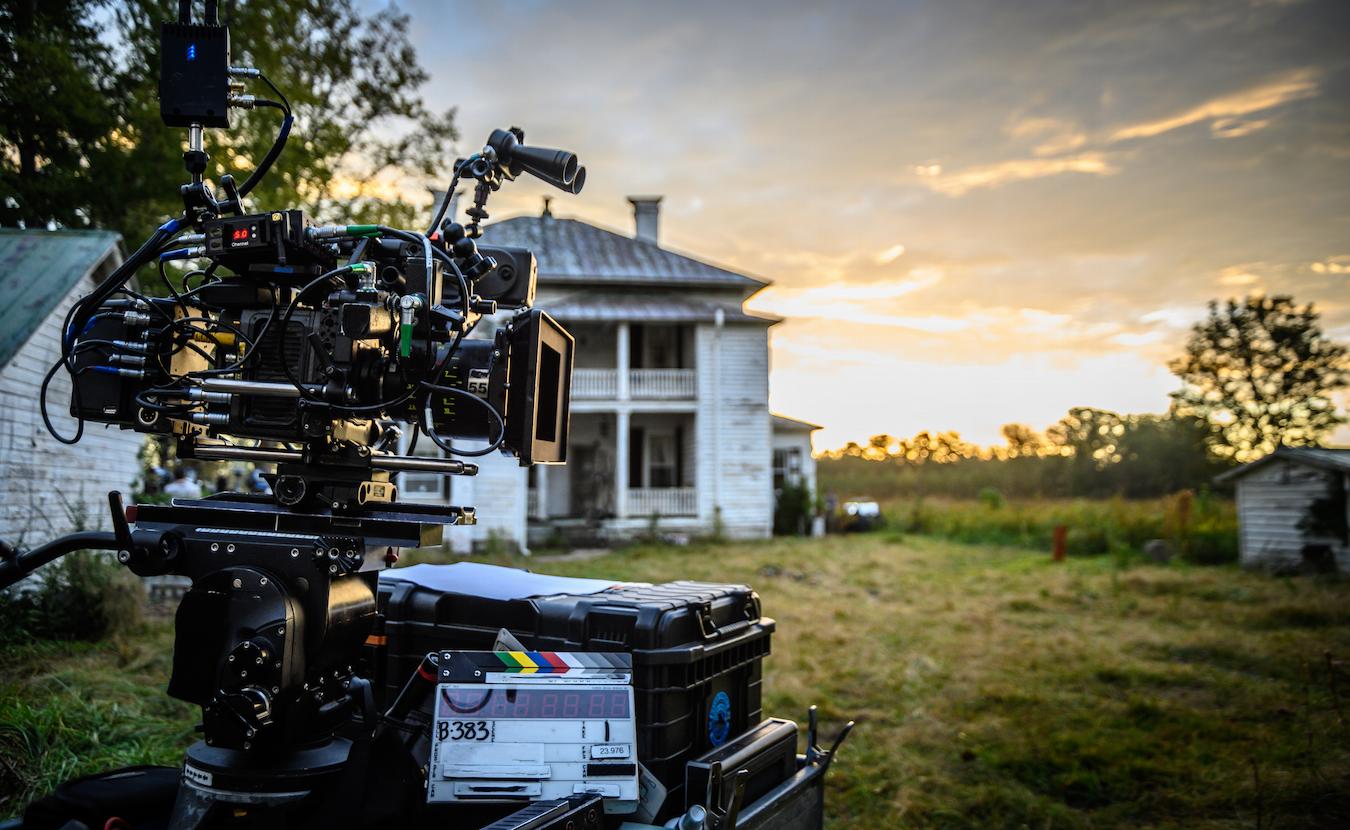You love movies (and who doesn’t), so you’ve decided you want to be a Cinematographer. Great! But what does a Cinematographer actually do? If you say shooting with a camera you’re only half right. There’s so much more that goes into it… and we have the scoop!
The main role of a Cinematographer is to communicate the script visually with the audience in mind. It’s visual storytelling at it’s best. From an operational side, the Cinematographer is the person who actually gets shoots the film, TV series or commercial. But there’s more to it than that. They are also the head of the lighting and camera departments which is a big deal. Still, that doesn’t really tell us what we need to know. The best Cinematographers work closely with the Director to help the director realize their creative vision, through composition, framing, lighting and camera movement.
The EFTI School of Photography in Madrid produced a very stylized version of the job a few years back.
The workflow of a Cinematographer comes down to the fundamentals phases of production: Pre-Production, Production and Post-Production. The project is essentially conceived three times and it’s the Cinematographer’s job to help shepherd the project through the first two phases and then provide input on the final one.
Pre-Production
In the world of filmmaking, cinematographers can be described in different ways. It all depends on how they interact with the camera. If they are operating the camera, they’re a Cinematographer. If they are instructing someone else to operate the camera and more focused on the overall look of the shot, they’re a Director of Photography (DP).
A Cinematographer’s work starts long before a frame of video is recorded. It’s here the Cinematographer has to make some crucial decisions about the look and feel: Questions such as whether to shoot on digital or film (which is rare these days)? What type of camera is the best choice to capture the Director’s vision? Should they shoot in color or black and white? If color is used, will the colors be saturated or faded? Are they going for a more realistic tone or an expressionistic one? What role will camera movement play in the shots? You’ll also assist in sourcing your crew and equipment to get those shots the Director wants.
As the Cinematographer and Director meet to answer all of these questions prior to shooting a bond is formed. Filmmaking is highly collaborative business so it’s critical to get along well with your Director and be on the same page. If things work out well, you’ll see the relationship continue which is why we commonly see the same Cinematographer/Director partnerships in movies.
Production
Cinematography is one of the most complex and challenging facets of filmmaking, especially during principal photography, when everything gets hectic. Not only does the Cinematographer have the biggest crew on set, but he also has to be in continuous communication with the Director and the Production Designer in order to make sure that everyone is on the same page with how the film will look.
For each scene, the Cinematographer decides on the best combination of cameras, filters and lenses, as well as where the cameras will be placed, what the lighting should be and when the scene will be shot. On large films, several cinematographers may oversee different camera set-ups. Others may serve as second-unit directors, shooting background or locations without the actors.
Post Production
Once everything is shot, the cinematographer’s work is largely done. You hand over all your footage to an Editor and let them work their magic. With the vast majority of projects captured in digital RAW formats, manipulating exposure and color is easier than ever before which reduces the involvement of the Cinematographer in post. While Editors and Colorists are masters of their trade, it’s still a good idea to stick around to make sure the film retains the look envisioned by you and the Director.
The Skills Needed
“A Cinematographer is a visual psychiatrist, moving an audience through a movie…making them think the way you want them to think, painting pictures in the dark.”
Cinematographer Gordon Willis (The Godfather, Annie Hall)
Cinematographers are both technicians and artists. They are in charge of the camera, its angles, the exposure used, and production style all enhance the storytelling. But they also must deal with the strengths and limitations of the camera equipment. Even today’s advanced cameras can’t reproduce an image the same way our eyes do, so the Cinematographer must compensate for this inconsistency.
Understanding file formats of media is another consideration. ProRes is one of the most well-known and widely used video file formats. Raw video also exists, but is often cost-prohibitive. It also adds significant increases in budget due to additional processing time and equipment requirements.
Perhaps the most important aspect of a Cinematographer’s job is their ability to work with others. They never work alone. And they constantly rely on others to help them achieve their goals. Any production requires collaboration. But a Cinematographer must be both committed to their work yet flexible in their approach.
Compromises always have to be made so a lot of the job is looking at the day and realizing what is vital to capture. The easiest way to communicate with the Grip and Electric teams is through making lighting plots and revising them as necessary. It’s the Cinematographer’s job to make sure every shot is usable and flag them when they’re not.
Anything can happen on a film set. So being able to adapt during production is a key trait of a successful Cinematographer.
Learning Cinematography
There are lots of great resources and associations out there to get more information. Here’s a few that we recommend:
The Role of the Cinematographer is part of our series that looks at various roles within film and television production. Also check out our description of the COVID Compliance Officer.

